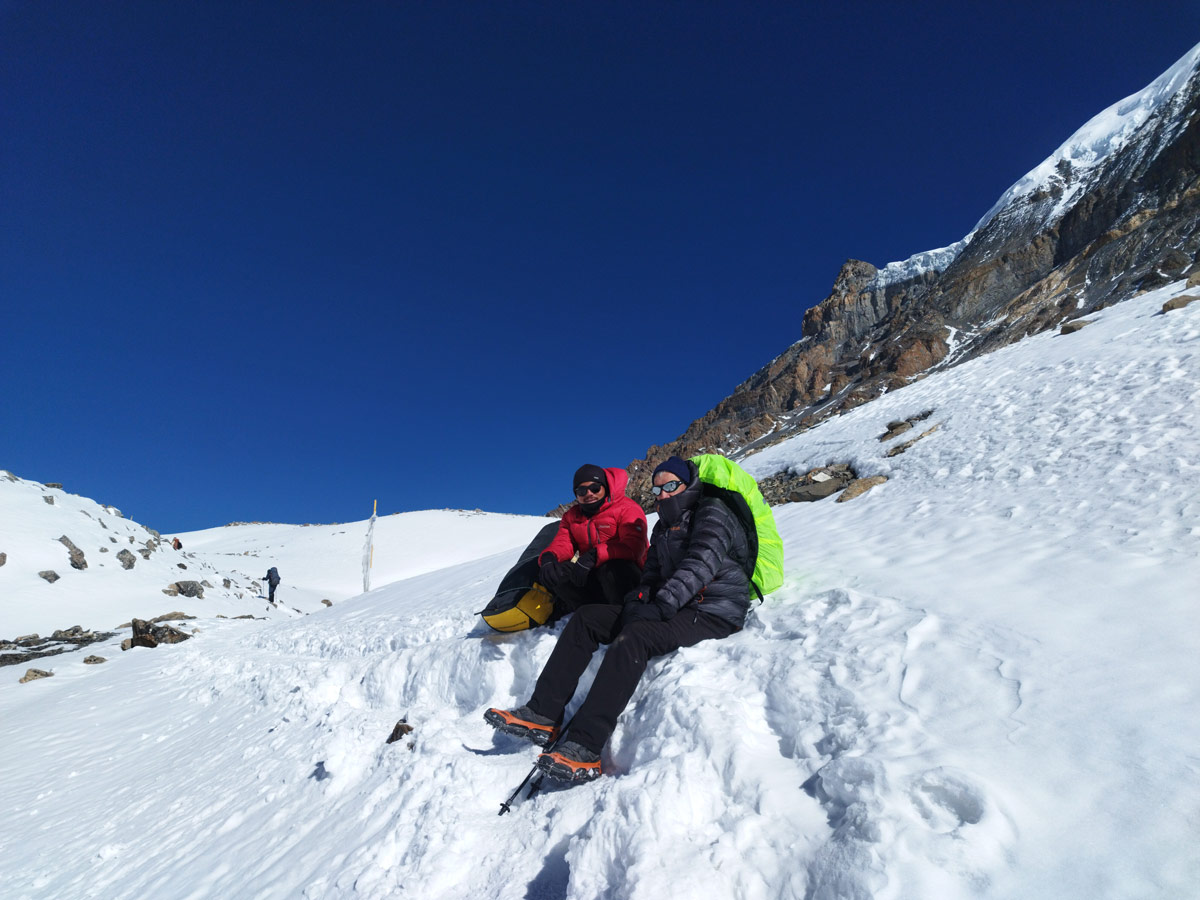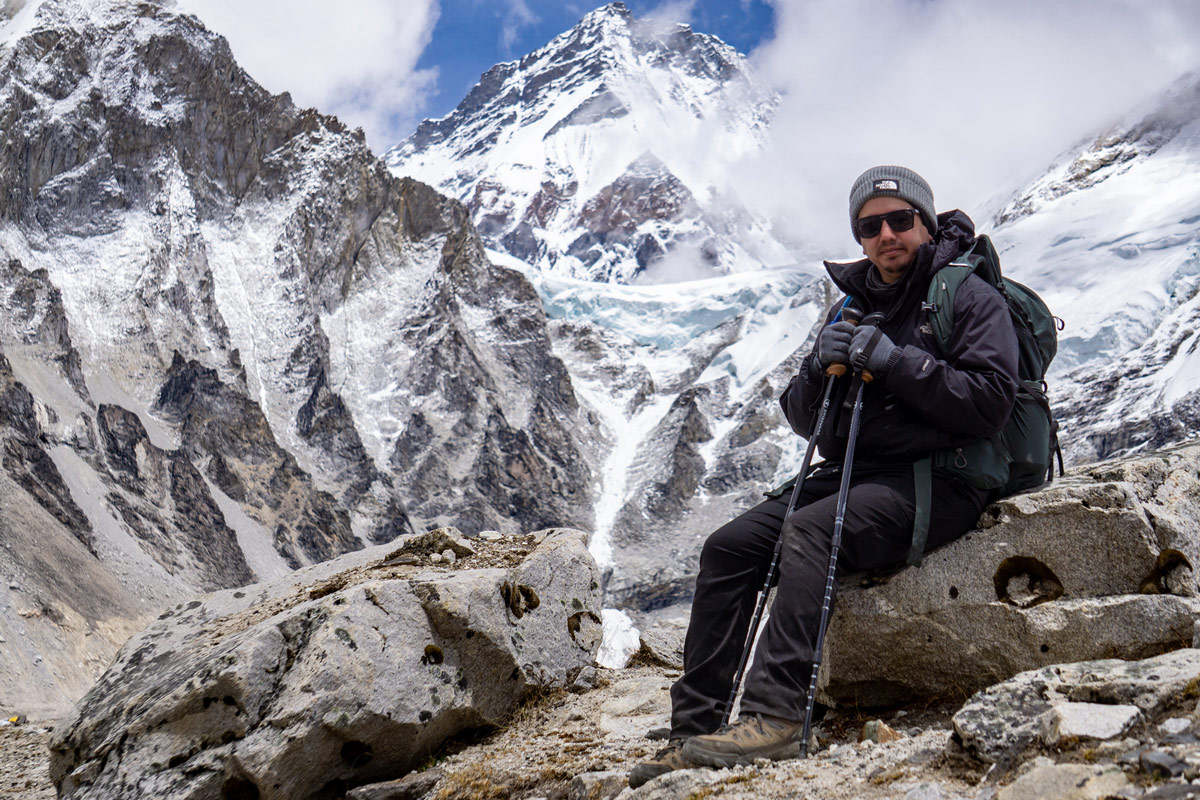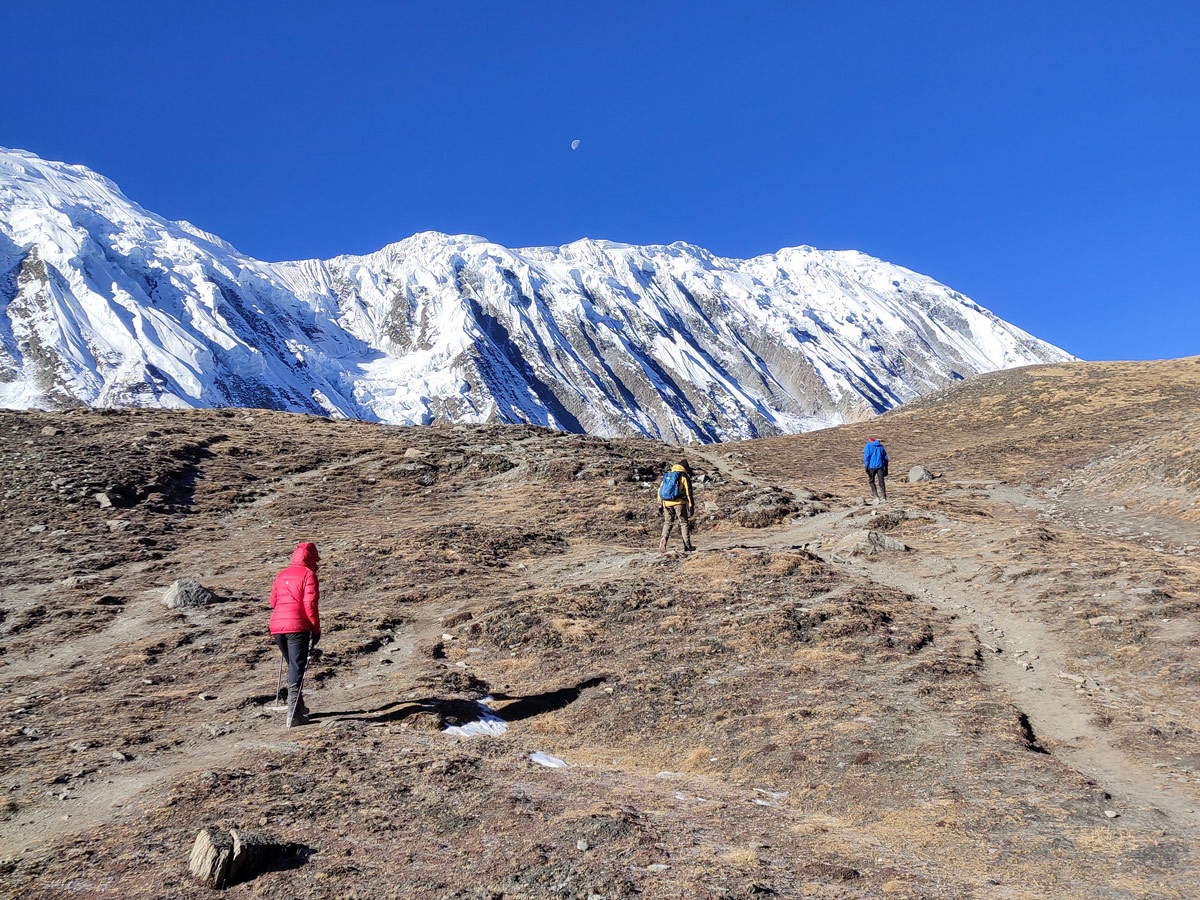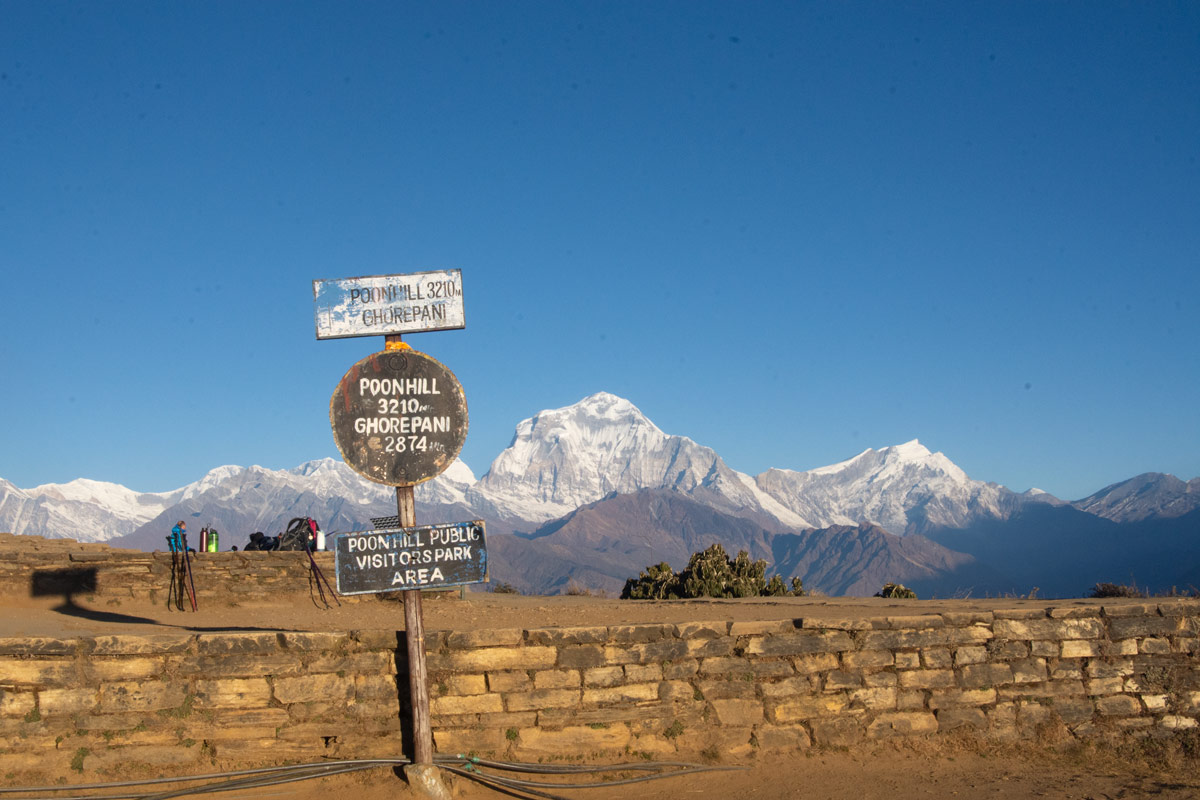The Annapurna region of Nepal is truly an adventurer’s dream come true as it features everything from towering Himalayan giants, diverse landscapes, and unique cultural experiences to breathtaking trekking routes.
Also known as the trekker’s paradise, this region is a true testament to nature’s grandeur.
However, the region also features something equally adventurous like the trekking trails- the high-altitude mountain passes of the Annapurna region.
These natural pathways are much more than just the routes in the region. They are the window towards the soul of the Himalayas. Read on to find out exactly why.
While the Annapurna region is dotted with several passes ranging from low to high, including the highest trekking pass in the world, there are some mountain passes in the Annapurna region that truly stand out.
Thorong La Pass (5,416 m)
Situated at an elevation of 5,416 m (17,769 ft), the Thorong La Pass is the highest in the Annapurna region besides being the highest trekking pass in the world.
One of the most famed passes of the region, it is also the highest point of the iconic Annapurna Circuit Trek.
Being at the Thorong La Pass is an out-of-the-world experience as you witness seemingly endless 360-degree panoramas of the majestic Himalayas of the Annapurna Range, Dhaulagiri Range, as well as the Manaslu Peak and Mustang Valley.
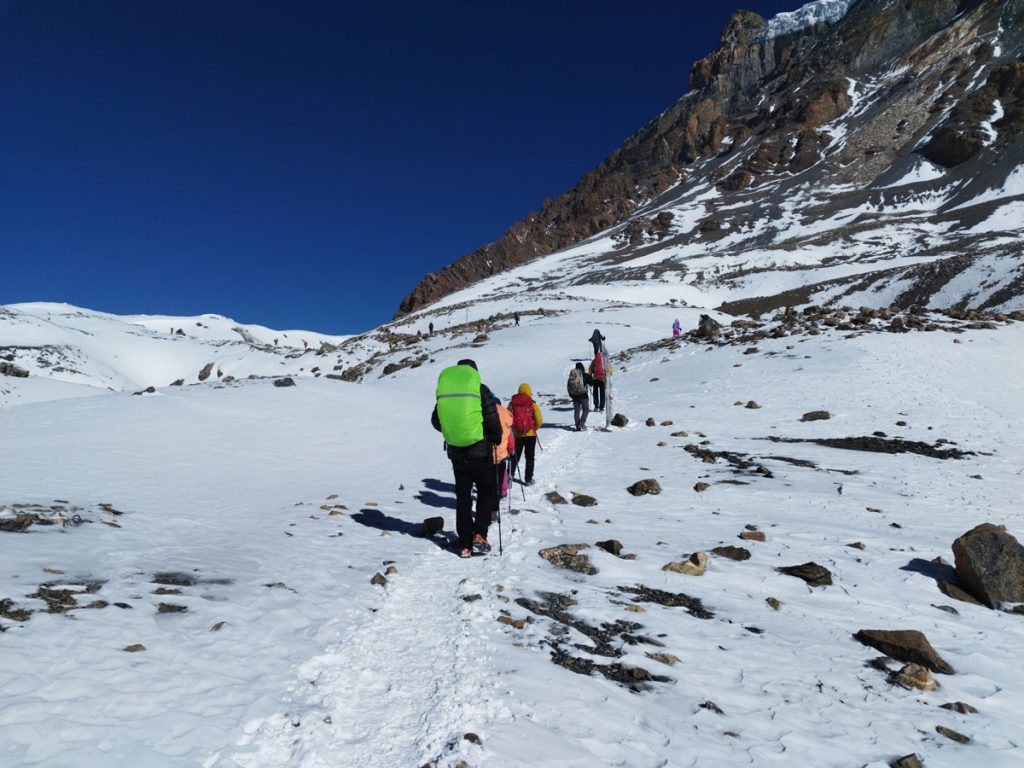
You will also witness views stretching from Nepal to Tibet while witnessing the raw wilderness of the unique Mustang Valley as the pass is a traditional trading route in the region.
What makes this pass even more fascinating is that despite being the highest pass in the region, it is considered the lowest way to traverse between the Annapurna and Dhaulagiri ranges.
Being in proximity to places like Mustang, Manang, and Muktinath, the Thorong La Pass holds high cultural and spiritual significance too. It is a part of the Manang- Muktinath route starting usually from Manang.
Most of the travelers access the trek from the Manang side after acclimatizing there as that is the most accessible and easy way to reach the pass before traveling down to Muktinath.
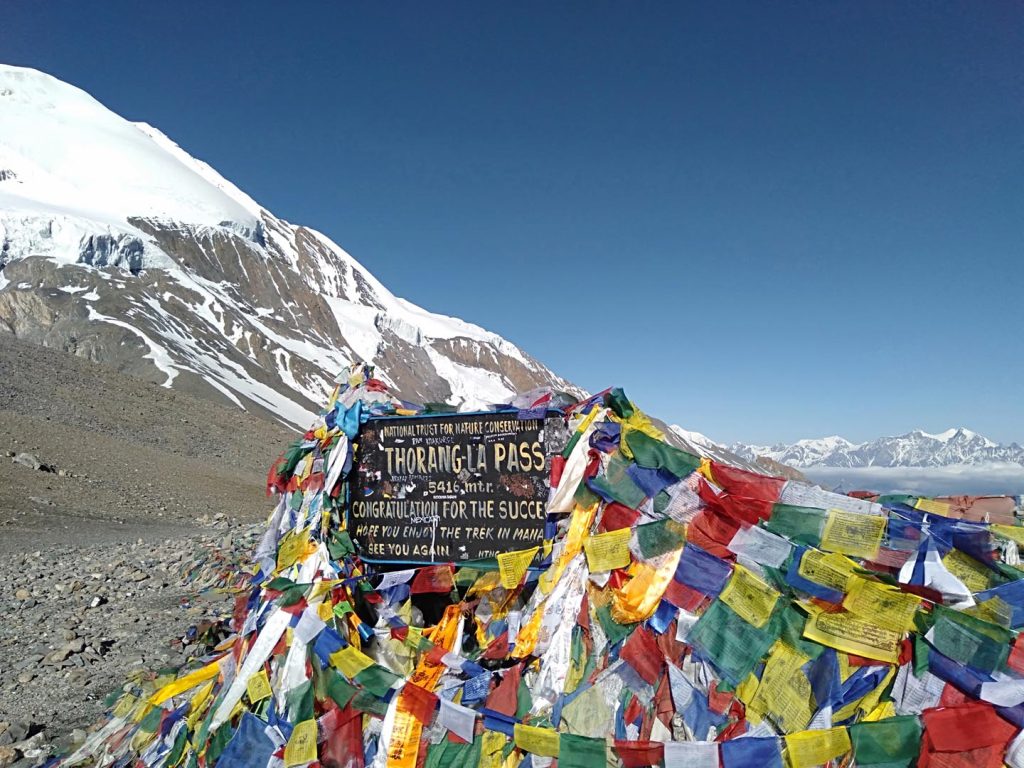
The ascent towards the Thorong La Pass is a challenge given the altitude and the stark mountainous landscapes blanketed in snow transitioning into a high-altitude desert as you go higher.
Altitude sickness is a great challenge for people wanting to conquer the Thorong La Pass. Therefore, acclimatization becomes extremely important to prevent altitude sickness. However, the experience at the pass is completely worth the challenges.
As you descend from the pass with the feeling of triumph and contentment, you are treated to a spiritual retreat as you enter the holy premises of Muktinath Temple which is a sacred place for Hindus as well as Buddhists.
Kang La Pass (5,320 m)
The Kang La Pass is a remote yet great alternative to the Annapurna Circuit as it takes the trekkers to the hidden jewel that is the Nar Phu Valley. This pass is the bridge between Manang and Nar Phu Valley.
Situated at an altitude of 5,320 m (17,454 ft), the trek to Kang La Pass is a visual treat while almost feeling like a passage into the world in suspended time as the region is so full of culture and ancient traditions.
Although taking you along a less frequented route, the trail doesn’t miss presenting the best of the Annapurna region as you traverse alongside the dense forest and running rivers to explore the hidden treasures of the untouched Nar Phu Valley.

As you cross all the hurdles and reach the top of the Kang La Pass, you are greeted with stunning views of the snowcapped Himalayas glowing under the beaming sunlight accompanied by a 360-degree panorama of surrounding valleys.
Once done with the views of the pass, the visitors are treated to a complete transformation of the stark and arid landscapes covered by barren slopes and juniper bushes into a lusher landscape of the Manang Valley as the Annapurna range peeks through the clouds.
However, getting the taste of accomplishment is not easy as the approach to Kang La Pass is demanding and features steep ascents and rugged terrains with altitude being a massive challenge too.
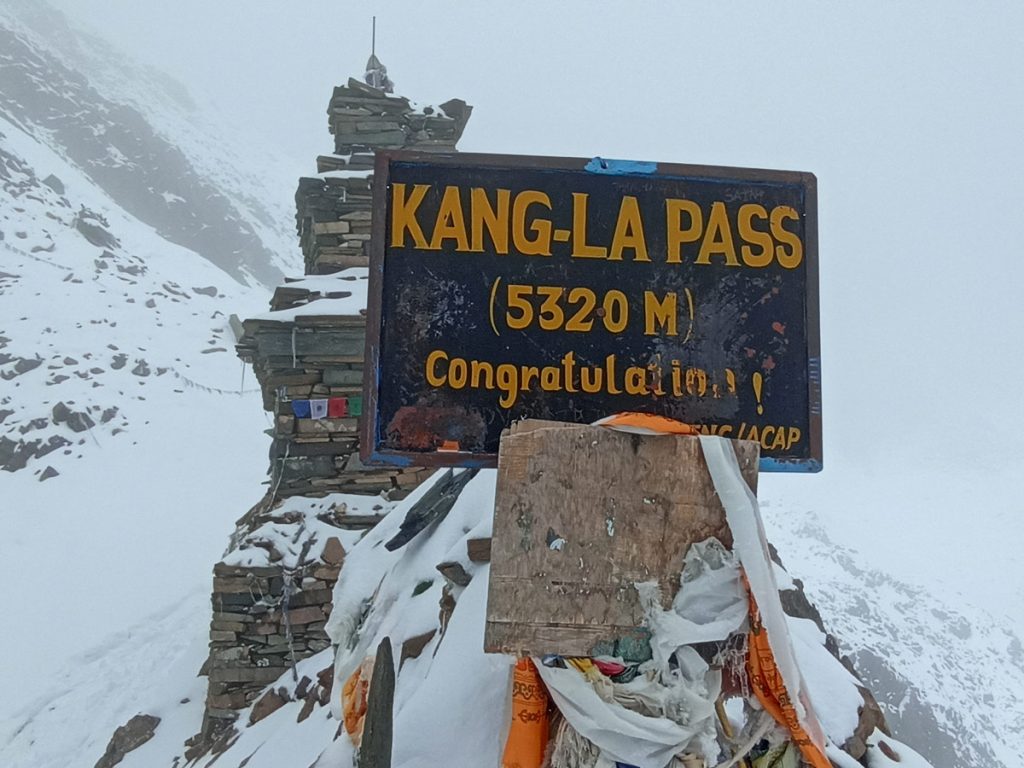
Spending a couple of days for proper acclimatization can go a long way and make your adventure much safer while also allowing you to indulge in the local Tibetan-influenced cultures and get a taste of the warm hospitality of the Nar Phu region.
While not impossible for beginners, the trek towards the Kang La Pass dotted with rustic mud-brick houses demands good physical fitness and is a must-visit adventure for beginners and seasoned trekkers alike.
Mesokanto La Pass (5,467 m)
Also known as the Tilicho Pass, the Mesokanto La Pass situated at an altitude of 5,467 m (17,936 ft) is one of the most demanding yet popular passes of the Annapurna region given the stunning views that it features.
The Mesokanto La Pass is a moderately challenging alternative to the Annapurna Circuit trek and it is known for the stunning close-up views of Tilicho Lake and the Annapurna massif that unfold at the top of the pass.
As the journey of Mesokanto La Pass is similar to that of the Annapurna Circuit Trek up to Manang, one can also take up this adventure as a combined trek in the form of Tilicho Lake with Thorong La Pass trek getting the high of both these adventures.
The trail leading up to Mesokanto La Pass skirts the edge of the Tilicho Lake- the highest lake in the world and allows the trekkers to immerse in the glacial beauty of the lake for a while before making their way to the pass.
Trekkers are to tackle steep ascents and rocky terrains with a potential snow cover amidst the highly unpredictable weather of the high altitude. Therefore, proper preparation along with physical and mental endurance is the key.
However, those who tackle these challenges are rewarded with stunning views of the Annapurna range, Dhaulagiri, and Tilicho Peak as they are reflected in the turquoise waters of the majestic Tilicho Lake.
The minimal vegetation and the snow cover in the stark landscape accompanied by the azure skies add to the fascination of the region allowing you to bask in the profound tranquility of the wilderness of this off-the-beaten region.
Naar Pass (5,400 m)
At an elevation of 5,400 m (17,716 ft), the Naar Pass is a remote adventure that takes you to the unexplored territories of the Annapurna region and an intimate glimpse into the heart of the Himalayas as this region contains less trekking traffic.
The Naar Pass is situated in the hidden folds of the Annapurna region effectively connecting it to the Naar village with the rather elaborate Annapurna Circuit and the journey to the pass is a unique blend of challenges and rewards.
With the already thin realm of air at the high altitude of the pass comes the demanding switchbacks with rugged terrain full of loose scree while you are accompanied by valleys, whispering water bodies, and ridges.
Therefore, your body needs to be of proper physical standards with long hours of walking being a regular for you. Besides that, proper acclimatization is of the essence to prevent altitude sickness while proper gear is mandatory to tackle the challenges.
Once all these preparations are in place, reaching the top of the pass is a less hectic and more rewarding experience for you as the south face of the mighty Annapurna range unfurls before you with crisp views of Annapurna II, Dhaulagiri, and Tilicho peak in sight.
Rewarding in the sense of accomplishments, the pass also boasts wonderful landscapes and a chance to engage with the Tibetan Buddhist culture in the secluded valley of Naar.
What makes the pass different from other passes of the regions you ask? Well, this pass gives you a much more intimate experience as opposed to some of the other passes that are full of trekkers and visitors.
Phu Pass (5,050 m)
The Phu Pass is often considered a gateway to ancient wonders when it comes to the Himalayas of the Annapurna region.
Located at an elevation of 5,050 m (16,568 ft), the Phu Pass acts as a bridge between the Nar and Phu Valleys, often collectively called the Nar Phu Valley.
The pass is popular for the unique cultural experience that it offers as it is one of the secluded and untouched villages that is still in touch with the authenticity of the high-altitude wilderness.
It is a lesser-known option for the trekking masses, but it is an equally enticing experience. The journey towards the pass, however, can be quite demanding.
The Phu Pass is usually conquered along with the Naar Pass, and it includes an ascent from the village of Naar winding through rugged terrains, often narrow ones, as you get accompanied by the flowing rivers and cliffs in the area.
The final ascent towards the pass can be slightly demanding even for experienced trekkers, which makes physical fitness and thorough preparation very important.
However, all these challenges pay off seeing as how you are greeted by the breathtaking 360-degree panoramas of Annapurna massif, Manaslu, Tibetan Plateau, and the surrounding valleys from the pass.
Besides being a thrilling adventure, the Phu Pass is also a corridor between cultures as the locals here live just like their ancestors did and are rather untouched by modernity while being some of the last bastions of Tibetan culture in Nepal.
Meta Pass (4,635 m)
Perfect for those wanting to venture into the world of high-altitude trekking, Meta Pass is located at an altitude of 4,635 m (15,206 ft) within the less-trodden paths of the Annapurna Circuit between Manang and Upper Pisang.
While the pass might not challenge its peers in terms of altitude, the same feature becomes a point of attraction for the pass as it beckons more beginners to explore the pass due to more accessibility and less challenge.
Having said that, the challenge is still quite significant with moderately difficult ascents through the rugged terrains of the region with a backdrop of panoramic vistas. Proper acclimatization is of utmost importance here too.
As you reach the top of the pass, unparalleled views of the Manaslu range and the Annapurna range dominate the horizon.
Besides the vista, this area also allows you to experience the local yak herder culture, which is rather unique to the Annapurna region, further enhancing your experience.
Yarcha Pass (4,860 m)
Standing at an elevation of 4,860 m (15,944 ft), the Yarcha Pass is a lesser-known yet fascinating addition to the list of the high mountain passes of the Annapurna region that connects the Marshyangdi Valley to the Nar Phu Valley.
The Pass is named after the valuable Yarchagumba (Cordyceps Sinensis) which holds high significance in traditional medicine, and it is found abundantly in the area surrounding the Yarcha Pass.
The Yarcha Pass basically acts as a natural bridge between the herding lands of the local communities and the biodiverse region dotted with Yarchagumba. It is a less trodden trail as not many people venture out in this region.
The main reason behind the thin crowd here is the remoteness and lack of accessibility as the Yarcha Pass is devoid of most of the facilities and the trekkers are expected to fend for themselves.
Reaching the pass also demands good physical fitness as the trail includes steep ascents and knee jolting descents.
The Yarcha Pass is not just a passing route in the Annapurna region but it is of high socio-economic impact as Yarchagumba is a priced possession for Nepal and earns a fair share in the export revenue.
Besides this, it also provides impeccable views of Himalayan giants like Kangaru Himal and Annapurna II alongside the stunning alpine meadows.
Kuchumro Pass (4,900 m)
One of the high passes of the region and a part of the Annapurna 7 passes trek, the Kuchumro pass is yet another hidden gem of the Annapurna region located at an altitude of 4,900 m (16,076 ft).
It is situated away from the main thoroughfares of the region and therefore allows the visitors to have a more secluded experience as opposed to its alternative passes.
Trekkers traverse through the characteristic beauty of the Himalayan terrain and are greeted with stunning views of Mt. Manaslu and Lamjung Himal along with other snow-capped peaks adorning the backdrop.
Conquering the Kuchumro Pass is considered a rather easier alternative in terms of physical exertion as compared to the likes of Thorong La Pass. However, it does come with its own challenges.
The Kuchumro Pass is a highly remote area with minimum facilities which requires the visitors to be self-sufficient in a way that they have to carry much more weight than they would have to for the other passes.
However, the experience is definitely worth putting in the effort as you navigate the path less known amidst the natural wonders of the Annapurna region.
Lubra Pass (3,772 m)
Located deep within the Lower Mustang region, the Lubra Pass is a path traveled less and serves as a crucial bridge between villages of the Mustang region like Lupra and Jomsom.
It is located at an altitude of 3,772 m (12,375 ft) and is a route often included in the Annapurna Circuit trek itinerary on the way to Jomsom from Muktinath.
The Lubra Pass is a challenging yet unique experience for travel enthusiasts as it offers beautiful views of the surrounding Himalayan giants like the Annapurna range, Tilicho Peak, along with Kali Gandaki River, and surrounding valleys.
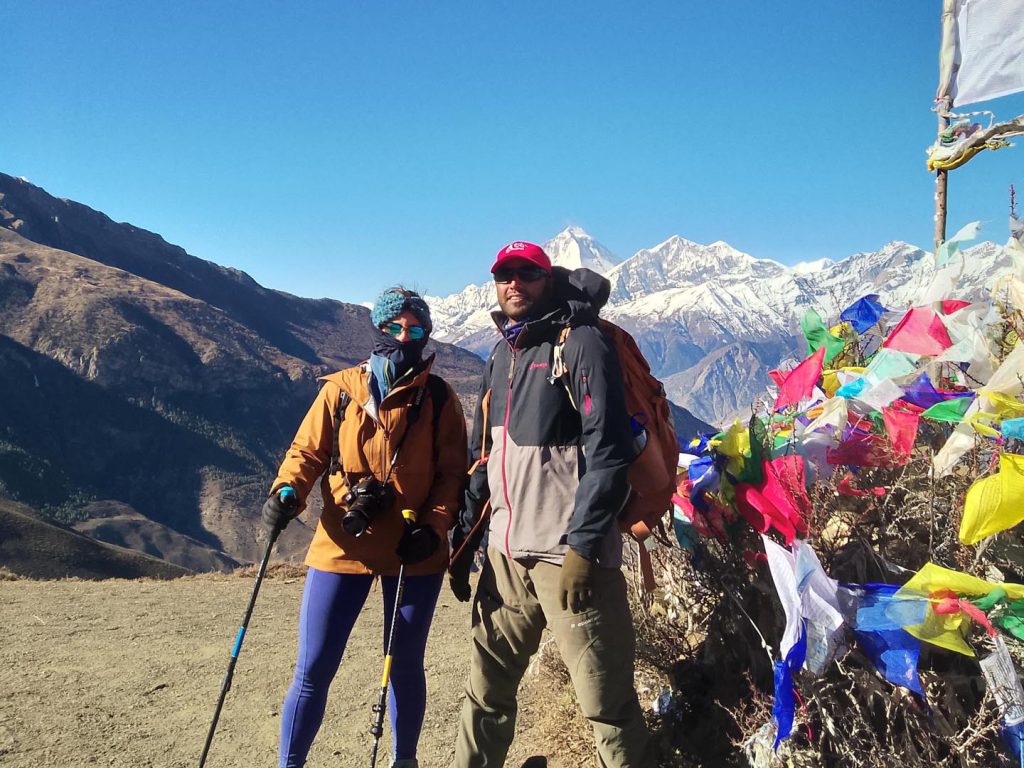
Besides this, the Lubra Pass also holds a unique cultural significance as it makes its way to the Lupra village which is a treasure trove of the Bon culture. Bon is known to be a religion even more ancient than Buddhism and is widespread in the Mustang region.
In Lupra, trekkers will often encounter fascinating Bon ceremonies being performed by priests adorned in colorful robes which might feel like taking a step back in time.
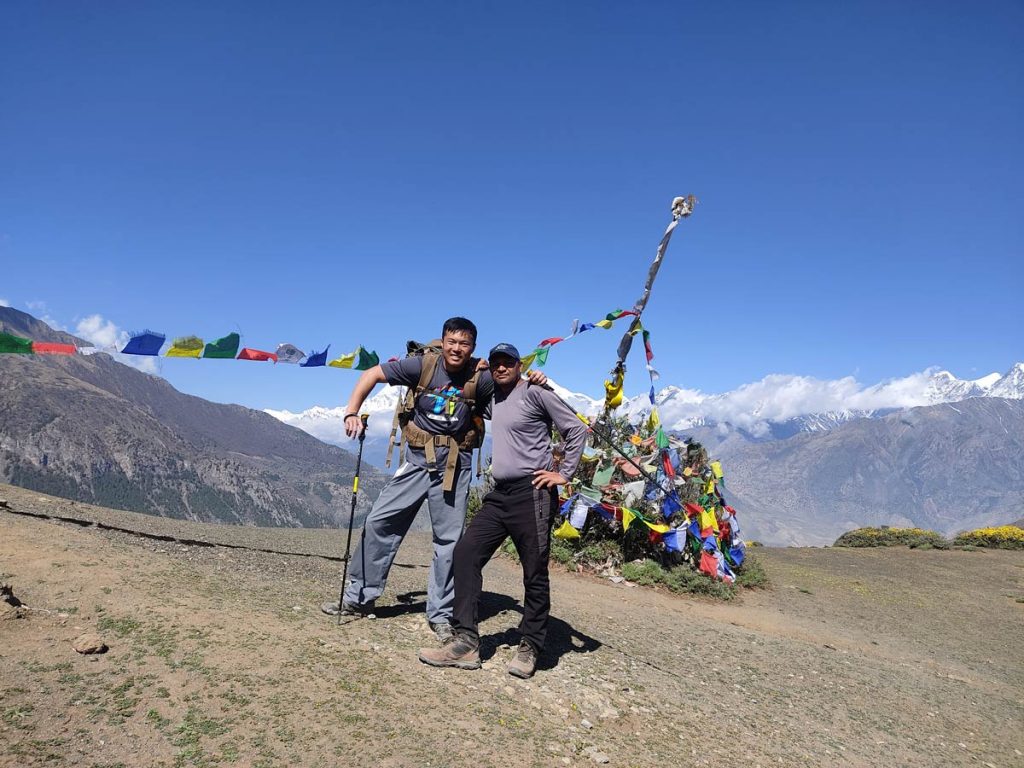
Besides the cultural significance, the trek to Lubra Pass also encompasses a beautiful change in landscapes as you come across a beautiful tandem of semi-arid landscapes with patches of lush vegetation and rock formations.
Although lower in altitude than some of the other passes in the Annapurna region, the trek to Lubra Pass is a journey worth experiencing.
Teri La Pass (5,595 m)
Located at an altitude of 5,595 m (18,356 ft) as a connection between the Nar Phu Valley and the Upper Mustang region, the Teri La Pass is a secluded yet one of the highest passes in the Annapurna region.
As you make your way towards the Teri La Pass, stunning landscapes including cascading waterfalls, rocky formations, dramatic glacial valleys, and lush meadows unfold amidst you.
You will come across some of the underrated yet picturesque mountain ranges like the Damodar Himal along with opportunities to spot rare Himalayan wildlife like blue sheeps.
The Teri La Pass further gives you a unique cultural experience through the deep-rooted Tibetan culture in the ancient kingdom of Upper Mustang and the unique culture of the hidden Nar Phu Valley.
Along with this, be prepared to witness architectural majesty in the form of rustic mud brick houses of Mustang and the slate-roofed buildings of the Nar Phu Valley.
